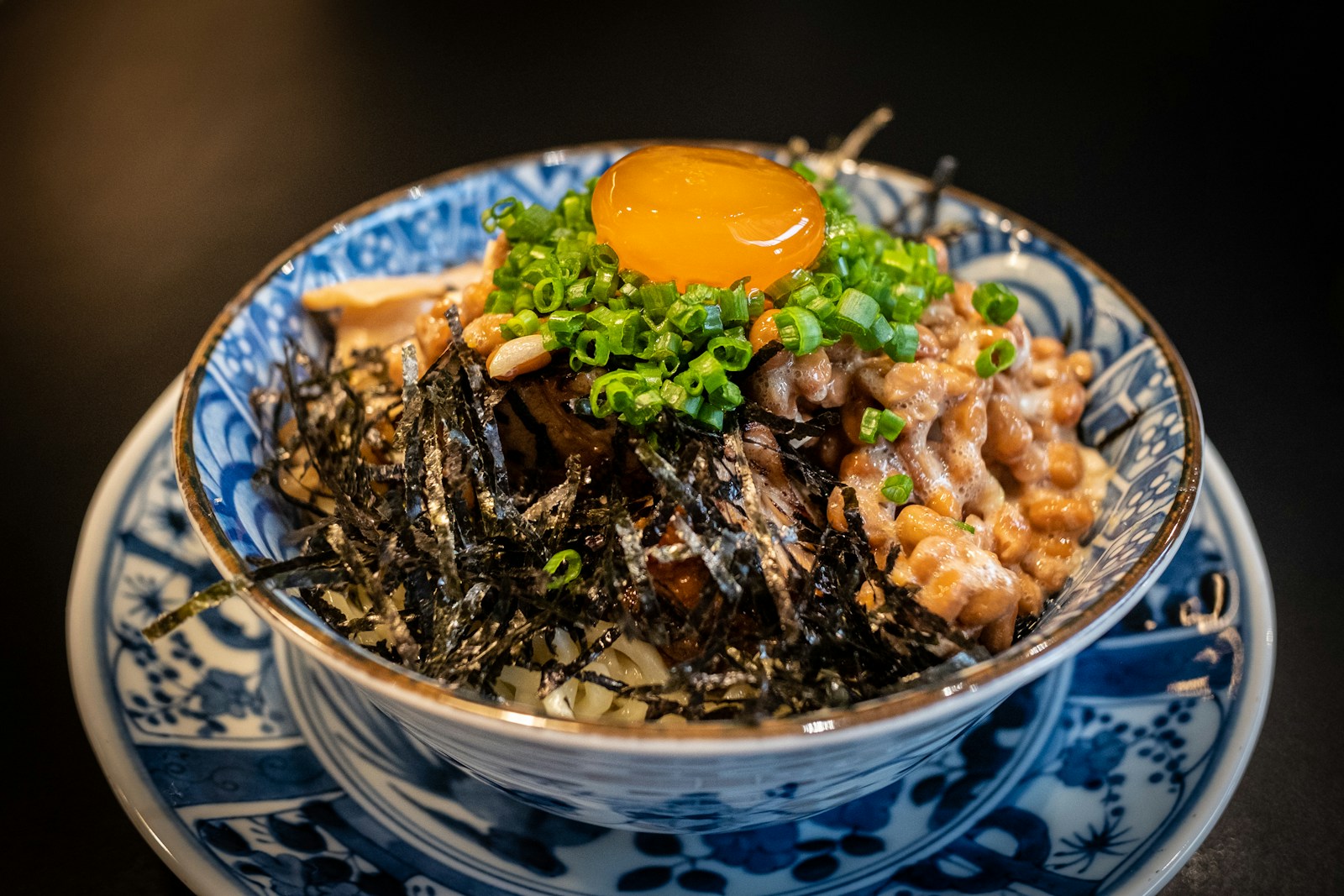Below is a detailed natto recipe inspired by the web search results provided (specifically from web IDs 0, 1, and 2), which discuss how to prepare natto and its cultural significance in Japanese cuisine. This recipe will guide you through making natto from scratch, which can help you access the therapeutic levels of Vitamin K2 (MK-7) mentioned in the X posts.
Homemade Natto Recipe
Ingredients
- 2 cups (400g) dried soybeans (organic, if possible)
- Water (for soaking and cooking)
- 1 teaspoon natto starter culture (natto spores, often labeled as Bacillus subtilis natto powder, available online or at specialty stores) or 1 tablespoon of store-bought natto (as a starter)
- 3 tablespoons boiled, cooled water (sterilized, to mix with the starter)
Equipment
- Large pot (for cooking soybeans)
- Colander (sterilized)
- Casserole dish or fermentation container (sterilized)
- Oven, Instant Pot, or yogurt maker (for fermentation at a consistent temperature)
- Clean cloth or paper towel (for covering during fermentation)
- Sterilized spoon or spatula
Instructions
- Soak the Soybeans
- Rinse 2 cups of dried soybeans thoroughly under cold water to remove any debris.
- Place the soybeans in a large bowl and cover with 6-8 cups of water (soybeans will expand as they soak).
- Soak for 9-12 hours, or overnight. In colder months, a longer soaking time (up to 12 hours) is recommended to soften the beans properly (as noted in web ID: 1 from Cultures for Health).
- Cook the Soybeans
- Drain the soaked soybeans and transfer them to a large pot.
- Cover with fresh water (about 2 inches above the beans) and bring to a boil over medium-high heat.
- Once boiling, reduce to a simmer and cook for 4-6 hours, or until the soybeans are very soft and can be easily mashed between your fingers. You can also use a pressure cooker to reduce cooking time to about 20-30 minutes.
- Drain the cooked soybeans in a sterilized colander and let them cool slightly to about 100°F (38°C), which is ideal for fermentation (web ID: 1).
- Prepare the Natto Starter
- If using natto starter powder: Mix 1 teaspoon of natto starter culture with 3 tablespoons of boiled, cooled water (sterilized) to create a slurry.
- If using store-bought natto: Mix 1 tablespoon of store-bought natto with 3 tablespoons of boiled, cooled water to dilute it (web ID: 2 from Okonomi Kitchen mentions using a previous batch as a starter).
- Inoculate the Soybeans
- Place the warm, drained soybeans in a sterilized casserole dish or fermentation container.
- Pour the natto starter mixture over the soybeans and stir gently with a sterilized spoon or spatula to ensure even distribution of the Bacillus subtilis natto bacteria (web ID: 1).
- Ferment the Soybeans
- Cover the dish loosely with a clean cloth or paper towel to allow air circulation (do not seal tightly, as the fermentation process requires oxygen—web ID: 2 mentions issues with sealing the lid in an Instant Pot, leading to overly wet beans with no strings).
- Place the dish in an oven, Instant Pot, or yogurt maker set to maintain a temperature of 100°F (38°C) for 20-24 hours. If using an oven, you can turn on the oven light to maintain a gentle warmth (web ID: 1).
- Check after 20 hours—natto should be sticky, slimy, and have white, web-like strings when stirred. A mild ammonia-like smell is normal, indicating successful fermentation (web ID: 1 describes natto as “slimy in the best possible way”).
- Cool and Store
- Once fermentation is complete, let the natto cool to room temperature.
- Transfer to smaller containers and refrigerate for at least 24 hours before eating—this resting period enhances the flavor and increases the Vitamin K2 content.
- Homemade natto can be stored in the refrigerator for up to 1-2 weeks or frozen for longer storage (web ID: 0 mentions keeping a well-stocked freezer of natto).
Serving Suggestions
- Classic Natto and Rice (as per web ID: 0): Serve a small portion of natto over warm Japanese short-grain rice. Mix in a raw egg yolk, a dash of soy sauce, and optional toppings like chopped green onions, nori (seaweed), or a drizzle of sesame oil.
- Other Ideas: Add natto to miso soup, mix it into salads, or use it as a topping for toast with avocado for a modern twist (web ID: 0 mentions incorporating fermented foods like natto into diets in creative ways).
Yield
- This recipe yields about 4-5 cups of natto, depending on the size of the soybeans after cooking.
Tips for Success
- Sterilization is Key: As noted in web ID: 1, sterilize all equipment to ensure only the Bacillus subtilis natto bacteria thrive, preventing contamination by unwanted microbes.
- Temperature Control: Maintaining a consistent 100°F (38°C) during fermentation is crucial for the bacteria to produce the characteristic sticky texture and Vitamin K2 (web ID: 1).
- Adjusting Fermentation Time: If the natto isn’t stringy enough after 20 hours, ferment for an additional 2-4 hours, but don’t exceed 24 hours to avoid over-fermentation, which can lead to a stronger ammonia smell.
Where to Find Natto Starter
- Natto starter culture (Bacillus subtilis natto spores) can be purchased online from retailers like Cultures for Health (mentioned in web ID: 1) or Amazon. Alternatively, you can use a small amount of store-bought natto as a starter, as suggested in web ID: 2.
By making natto at home, you can enjoy a nutrient-dense food that directly ties into the health benefits of Vitamin K2 discussed in the X posts, particularly its ability to reduce muscle cramps, support mental health, and improve overall metabolic health. Let me know if you’d like more details on natto’s nutritional profile or additional recipes!

Leave a Reply